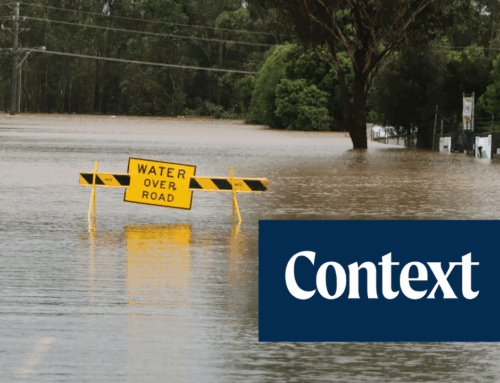An alarming study by the National Centers for Environmental Information recently found that hurricanes are lingering for longer periods of time, causing historic rainfall and flooding as they “stall” over one location. This is not news to residents of Texas, Louisiana, Florida and other areas that have been ravaged by catastrophic storms in recent years, but it provides a strong empirical case for why the federal government must fix its broken and outdated disaster policies.
Congress should start by reforming the National Flood Insurance Program (NFIP), which provides necessary flood coverage to more than 5 million property owners nationwide. Currently the dysfunctional program does very little to incentivize mitigation and subsidizes dangerous development in environmentally sensitive areas by charging risk-blind insurance rates. That is why the NFIP has cost U.S. taxpayers more $30 billion and fails to protect those in harm’s way.
There was a sign of progress last fall when the House of Representatives passed a bill that addresses many of the NFIP’s ills, but the Senate has been kicking the can down the road. The latest research shows that we can no longer afford inaction, as stalled tropical depressions have the potential to dump large amounts of rainfall in a given location, spelling disaster for areas previously thought to be less vulnerable to flooding. With the peak of a projected above average 2018 hurricane season quickly approaching and the NFIP set to expire on July 31, the Senate must improve on the House’s bill and pass a comprehensive long-term solution.
Taxpayer savings
Incentivizing mitigation is vital to the future success of the NFIP. A recent report by the National Institute of Building Sciences found that every $1 invested in mitigation saves taxpayers and the federal government $6 in disaster recovery. Investing in mitigation safeguards the program for future generations and ensures that flood-prone areas are more resilient to storms. This will help the NFIP save money on post-disaster recovery so that it can begin paying back the billions of dollars it has borrowed from taxpayers.
The Senate must also make a technical correction to current flood law by clarifying that property owners in high-risk flood zones can obtain private flood insurance — rather than be required to rely on the NFIP — to meet the federal lending requirement. By allowing more competition in the flood insurance marketplace, risk would be shifted off the backs of taxpayers and consumers would have more choice, often at better rates and higher coverage limits. In fact, a recent study by Milliman found that even in flood-prone states like Florida, Texas and Louisiana — which account for more than 58 percent of total NFIP policies across the nation — between 70 percent and 90 percent of policyholders could find cheaper coverage in the private market than from the NFIP. Normalizing the flood insurance experience will also lead to far more Americans obtaining sorely needed coverage.
Modern technology
Along with allowing private sector competition, the NFIP should be reformed to ensure the Federal Emergency Management Agency (FEMA), which oversees the NFIP, updates its antiquated flood maps. Modern technology has dramatically increased the accuracy of risk-assessment tools, and these tools can be used to ensure that flood maps are precise, not best guesses. With updated maps, NFIP coverage rates will more accurately reflect risk.
These are common sense, bipartisan solutions for a program that desperately needs fixing. The National Centers for Environmental Information report proves storms are not only going to continue wreaking havoc on states across the nation but are likely to be even more dangerous.
Congress has the power to mitigate the damage by reforming the broken NFIP, and time is running out.










